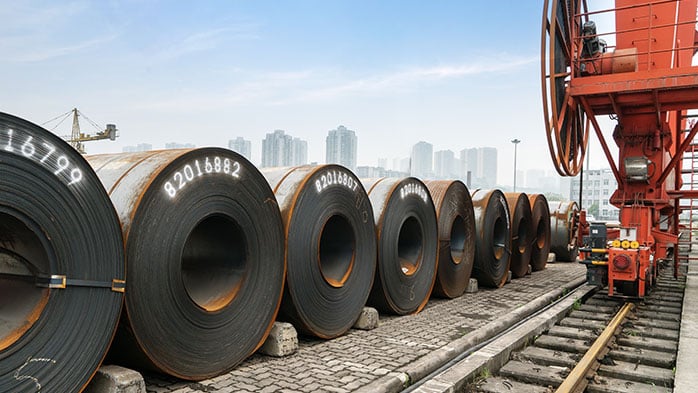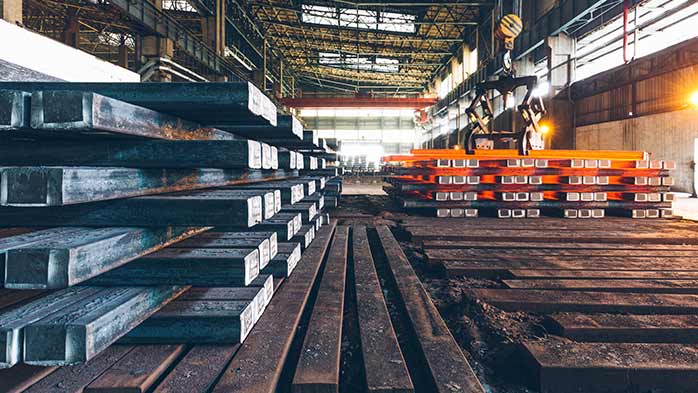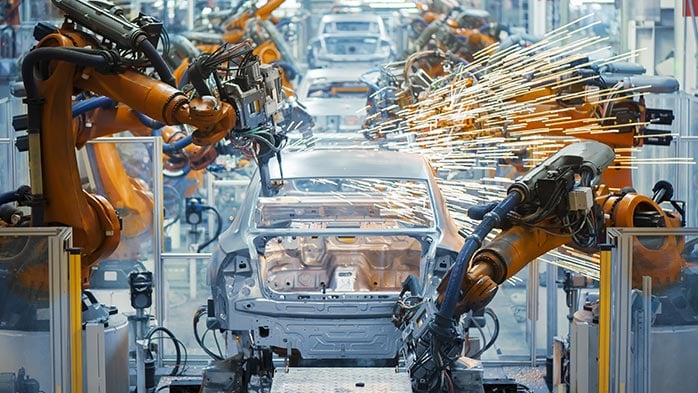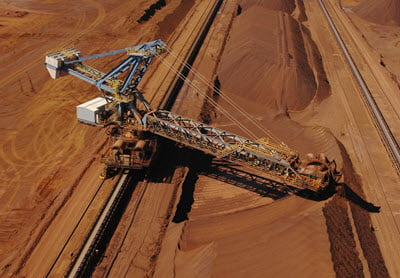Needle coke and graphite electrode availability has been under pressure since 2017 following substantial financially- and environmentally-driven capacity closures, particularly in China. As a result, prices for both materials rose sharply and are expected to remain structurally high, at least in the medium term.
Following extensive primary research, involving interviews with major needle coke producers and consumers, CRU has uncovered new insights into the changing use of needle coke.
The use of needle coke in graphite electrodes is changing
The amount (and quality) of needle coke1 used in the manufacture of graphite electrodes depends upon the electrode grade and diameter required2. The key properties of needle coke are resistivity and the coefficient of thermal expansion (CTE).
Typically, ultra-high power (UHP) electrodes and the connecting pins contain a high proportion (>95%) of needle coke, as this is necessary for high charge transmission for melting scrap in electric arc furnace (EAF) steel production. These electrodes have the lowest resistivity and CTE.
High power (HP) electrodes use significantly less needle coke (20-30%) as the quality of the electrode is less critical in their use in secondary steelmaking in ladle furnaces, for example, with electrodes used solely for reheating molten steel. The remaining input is petroleum coke3, a lower quality coke product.
In recent years, the average proportion of needle coke in electrode production has fallen in China – the chart below shows the current situation. Producers have responded to supply shortages and the rapid increase in needle coke prices by substituting in petroleum coke.
This has implications for the quality of graphite electrodes being produced in China and long term demand.
Why is this important for the graphite electrode market?
As the proportion of needle coke declines, so does the quality and performance of the electrode – this explains why UHP electrodes require a larger share of needle coke.
In addition, the Chinese producers that are substituting out needle coke are typically blending petroleum coke with lower quality (coal-based) needle coke, which further affects electrode quality. This reduction in quality can have a significant impact for electrode end users – Chinese electrode consumption rates can be as much as 50% higher than for Japanese electrodes. Lower quality raw materials also lead to a higher rate of breakages, more production downtime and increasing production costs. For these reasons, the average graphite electrode produced in China4 is considered of lower quality, particularly for UHP electrodes.
This is creating a divide in the global market, between China and the rest of the world. UHP electrode consumers prefer non-Chinese electrodes due to their (on average) superior quality and higher quality needle coke inputs. However, the majority of new capacity additions, for both needle coke and graphite electrodes, are coming from China. This satisfies HP electrode demand, with China a major exporter, but presents a key risk to global UHP end users, where demand is growing as EAF steel production gains share.
As a result, we expect that the markets will bifurcate, with the high-quality needle coke and UHP electrode sub-sector of the market remaining tight, at least for the next few years, providing support to prices. Whereas, with planned capacity additions, lower quality needle coke and HP electrode prices will adjust down faster.
Lithium-ion battery demand is a risk factor
Non-Chinese electrode producers are not expected to follow China’s coke blending strategy, due to more stringent practices around electrode use in EAFs in the rest of the world. Despite the changes in needle coke use seen in Chinese electrode production, substitutability is limited, so demand shifts are muted.
However, the trajectory of needle coke demand growth from the lithium-ion battery (LIB) sector is more uncertain and this will be critical in the long term outlook for the needle coke and graphite electrode markets.
The anticipated acceleration in LIB and electric vehicle (EV) demand has major implications for a variety of commodity markets, including graphite. The anode in a LIB is produced from either ‘natural’ mined graphite, or ‘synthetic’ graphite5. As a result, we expect that demand for graphite will increase substantially from the early 2020s onwards as it is the only commercially-viable anode material at present. Synthetic graphite is currently the preferred material, due to its reliability and performance, providing significant upside potential for needle coke demand.
As the figure below shows, needle coke demand from LIB anode production is expected to increase by more than 8 times, from 2018 levels, in the long term. This is in comparison to electrode demand, which will increase by around 0.5 times. The LIB anode share of global needle coke demand will exceed 30% by 2028, from below 10% in 2018.
As LIB demand grows, competition with the graphite electrode market for needle coke volumes will rise. Grade is again an important aspect to consider, with only high performance EVs requiring high quality needle coke (as for UHP electrodes) for the LIB anode. With limited planned supply additions for high quality needle coke from world ex. China producers, increased demand from LIBs is likely to exacerbate market tightness and further split the market into sub-sectors.
However, CRU closely monitor the rapidly evolving LIB market and any signs of change in anode raw materials demand. Anode technology is still in its relative infancy, and new technologies are continually being developed meaning that demand elasticity in this market is significantly higher than for electrodes. For example, petroleum coke is starting to be tested for its substitutability with needle coke in some LIB applications, posing a significant downside risk to long term needle coke demand.
The next few years are sure to be a critical period for these intertwined markets and will pave the way for future conditions after the last 2 years of volatility.
Endnotes:
- Needle coke is a form of high purity calcined coke, named after the acicular appearance of the product. Needle coke can be produced from petroleum residues (oil-based needle coke), considered a superior raw material for higher quality electrodes, or coal tar pitch (coal-based needle coke).
- Graphite electrode grades: UHP = ultra-high power, HP = high power, RP = regular power.
- Petroleum coke is a semi-purified, amorphous form of coke with inferior electrical properties to needle coke.
- The major flagship producers in China produce good quality graphite electrodes, however on a country average basis, quality is low.
- Synthetic graphite is a man-made product from high temperature processing of needle coke and other carbon-based raw materials.
















